The faithful at five Diocese of Venice parishes were given the unique opportunity to venerate the relics of six Mexican martyrs during a special tour by the Knights of Columbus Silver Cross.
The relics are those of six Catholic priests, and members of the Knights of Columbus, who accepted death rather than halting their public practice of faith during the Cristero War of 1926 to 1929.
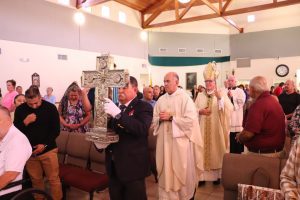
Bishop Frank J. Dewane celebrated the Holy Sacrifice of the Mass on Nov. 24, 2024, the Solemnity of Our Lord Jesus Christ, King of the Universe, to mark the start of the tour at St. Maximilian Kolbe Parish in Port Charlotte.
Bishop Dewane said these martyrs should serve as an example to all as they lived their faith with courage nearly a century ago.
“For these six young priests, they were clear who was King in their life, there is no doubt,” Bishop Dewane said. “Christ must be the King for you and me. If someone else, or something else has taken that role, we have to look at how we set about changing that in the life we live.”
The relics – tiny slivers of bone – are housed in a silver, cross-shaped reliquary and it was placed in front of the altar so people can pay their respects after Mass. The reliquary with the relics of the six priests was presented to the Supreme Council of the Knights of Columbus in 2001.
The six priests, Fathers Luis Bátis Sáinz, José María Robles Hurtado, Mateo Correa Magallanes, Miguel de la Mora de la Mora, Rodrigo Aguilar Alemán, and Pedro de Jesús Maldonado Lucero, were among 25 Mexican martyrs whom St. John Paul II canonized in 2000.

At the time of the Cristero War, the anti-clerical government, in the wake of the Mexican Revolution, banned public religious rituals. Catholic clergy and lay people resisted, and many were arrested, tortured or killed. The rebellion is depicted in the movie “For Greater Glory,” and includes Father Hurtado’s story and death in 1927 at the hands of Mexican troops.
The Silver Cross, which is normally housed at the Knights of Columbus Supreme Headquarters Museum in New Haven, Connecticut, was brought to St. Maxmilian Kolbe Parish at the behest of Kellmis Fernandez, who serves as the Florida Knights of Columbus Hispanic Development Coordinator.
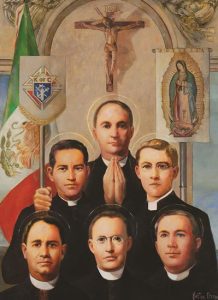
“My heart is bursting with joy to see everyone here,” Fernandez said. “This is something very special. We have been after this for quite a while. I think providence is great, because these are people who gave their lives for their belief.”
While in the Diocese of Venice, through Nov. 2, the Silver Cross visited San Antonio Parish in Port Charlotte, San Pedro Parish in North Port, and Holy Cross Parish in Palmetto, before being transferred to the Diocese of St. Petersburg.
Present for the Mass were the Knights of Columbus Honor Guard, as well as representatives of the Supreme, State and Diocesan Councils.







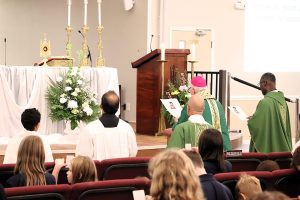 “Blessed Carlo Acutis spent his whole life devoted to Jesus Christ in the Eucharist. He understood his invitation to the Banquet of the Lord,” Bishop Dewane said. “He always kept Christ at the center of his life. He never forgot that invitation he had to the Banquet that Christ prepares for all of us. Despite his illness, he didn’t ask to be excused from going to church for Mass, Eucharistic Adoration, or prayers. He heard those excuses of people who weren’t there at the Banquet and he kept his word to Jesus. You and I are called to do the same. Called to remember; called to pray; called to come to the Mass – the Eucharistic celebration – and to love God and love our neighbor.”
“Blessed Carlo Acutis spent his whole life devoted to Jesus Christ in the Eucharist. He understood his invitation to the Banquet of the Lord,” Bishop Dewane said. “He always kept Christ at the center of his life. He never forgot that invitation he had to the Banquet that Christ prepares for all of us. Despite his illness, he didn’t ask to be excused from going to church for Mass, Eucharistic Adoration, or prayers. He heard those excuses of people who weren’t there at the Banquet and he kept his word to Jesus. You and I are called to do the same. Called to remember; called to pray; called to come to the Mass – the Eucharistic celebration – and to love God and love our neighbor.” Being in the presence of 165 relics was a powerful experience for many. Notable pieces in the recent exhibition include a portion of the True Cross and a piece of the veil of the Blessed Virgin Mary. A relic is a piece of the body of the saint, usually a bone, or an item used or owned by the Saint or an object that has touched the tomb of the Saint.
Being in the presence of 165 relics was a powerful experience for many. Notable pieces in the recent exhibition include a portion of the True Cross and a piece of the veil of the Blessed Virgin Mary. A relic is a piece of the body of the saint, usually a bone, or an item used or owned by the Saint or an object that has touched the tomb of the Saint.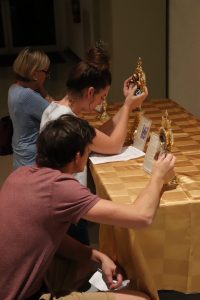 The veneration of these sacred relics is a long tradition in the Church dating to the earliest days when the first Christians would gather near the tombs of the early martyrs. Miracles were connected with these sacred places and relics, which do not have some magical power in them, their power comes from God, Father Martins explained. “The fact that God uses the relics for healing miracles tells us that the Lord wants us to draw our attention to the Saints as models and intercessors.
The veneration of these sacred relics is a long tradition in the Church dating to the earliest days when the first Christians would gather near the tombs of the early martyrs. Miracles were connected with these sacred places and relics, which do not have some magical power in them, their power comes from God, Father Martins explained. “The fact that God uses the relics for healing miracles tells us that the Lord wants us to draw our attention to the Saints as models and intercessors.